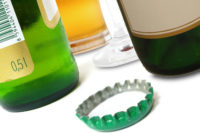Exercise Information on Food & Beverage Labels Could Be Coming

A new study reveals that labeling food and drinks with how much walking or running is needed to burn them off could help tackle the obesity crisis. So how much exercise would it take to work off that 1/2 pizza or pint of Ben and Jerry's?
The study backs a new approach to labeling: displaying small symbols showing how much physical activity is needed to compensate for consuming the item. A fizzy drink containing 138 calories, for example, could be accompanied by a small symbol of a person showing it would take 26 minutes of walking or 13 minutes of running to burn it off.
The team says the approach puts calories in context and may help people to avoid overeating, or spur them to move about more in a bid to burn off the energy they have consumed. They also suggest it might encourage food producers to make products with less calories.
Professor Amanda Daley of Loughborough University, first author of the research, said a simple approach is important since it is thought we only spend about six seconds looking at food before deciding whether to buy it.
“In that [time] we’ve got to have something that you can easily understand and make sense of without having to have a PhD in mathematics to work out what [eating] a quarter of a pizza actually means,” she said.
The team found that compared with no labeling or other labeling approaches taken together, participants selected on average about 65 fewer calories per meal when exercise-based labels were present on food or menus.
Digging deeper, the team found people selected 103 fewer calories when the exercise-based labels were used compared with no labeling alone.
However, the research has limitations: most of the studies were based on hypothetical situations or laboratory-based work, and there was a limited number of them.
The studies also varied considerably in how they explored the impact of exercise-based labeling.
Dr Frankie Phillips, a registered dietitian and spokesperson for the British Dietetic Association, said exercise-based labeling could also prove confusing, while a focus on calories, although a useful indicator, does not tell a consumer whether food or drink is “healthy."
“For example, calories labeled on a sandwich might come to around 400 kcal whereas a chocolate confectionery bar might be 350 kcal,” she said. “If calories are given central importance then the chocolate bar would appear to be a better choice, whereas a more balanced approach would obviously show that a sandwich is far superior nutritionally, despite being higher in calories.”
Looking for a reprint of this article?
From high-res PDFs to custom plaques, order your copy today!





